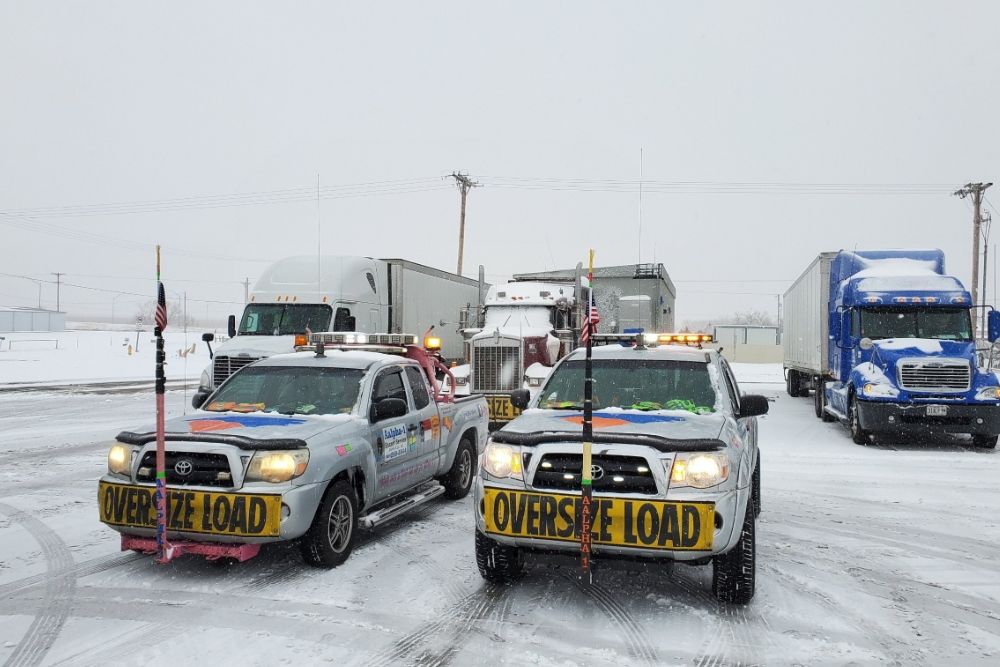As cold weather sets in, pilot car drivers operating in the United States and Canada face unique challenges during the winter months. Hazardous road conditions, reduced visibility, and extreme weather can make driving conditions dangerous. To ensure the safety of pilot car drivers and the loads they escort, it is crucial to adhere to winter safety tips. Here are some essential guidelines for pilot car drivers to navigate the winter season safely:
1. Vehicle Maintenance
- Check tire pressure regularly and ensure proper tread depth for enhanced traction.
- Install winter tires for improved grip on snowy and icy roads.
- Test the battery to ensure it can withstand colder temperatures.
- Keep the headlights, taillights, and windshield wipers in good working condition for better visibility.
2. Emergency Kit
- Equip the vehicle with an emergency kit containing items such as a flashlight, blankets, water, non-perishable food items, and a first aid kit.
- Include items like jumper cables, a shovel, sand or kitty litter for traction, and a tow rope for emergency situations.
3. Weather Monitoring
- Stay informed about weather forecasts along the route and plan journeys accordingly.
- Be prepared for sudden weather changes and have alternative routes in mind if road conditions worsen.
4. Safe Driving Practices
- Maintain a safe following distance from the vehicle being escorted to allow for ample braking distance.
- Drive at reduced speeds to adjust for slippery road conditions and limited visibility.
- Avoid sudden maneuvers and brake gently to prevent skidding on icy roads.
- Use caution when crossing bridges, as they tend to freeze before other road surfaces.
5. Communication
- Stay in constant communication with the lead and following vehicles via radio or other communication devices.
- Notify the convoy of any road hazards, weather conditions, or changes in the route promptly.
6. Rest and Breaks
- Take regular breaks to combat fatigue and ensure alertness while driving.
- Stay well-rested before embarking on long journeys to maintain focus on the road.
7. Training and Certification
- Ensure that all pilot car drivers undergo appropriate training for winter driving conditions.
- Stay updated on relevant regulations and requirements for pilot car operations in winter.
Final Thoughts
Adhering to these winter safety tips can help pilot car drivers navigate challenging conditions and ensure the safe and timely delivery of oversize loads. By prioritizing safety and preparedness, pilot car drivers can mitigate risks and protect themselves and other road users during the winter season.
Remember, safety should always be the top priority for pilot car drivers, especially in adverse winter weather conditions. Stay vigilant, be prepared, and drive safely!

